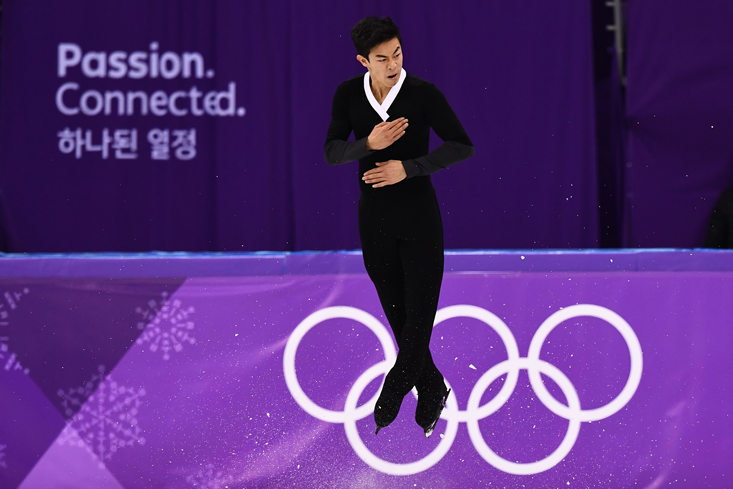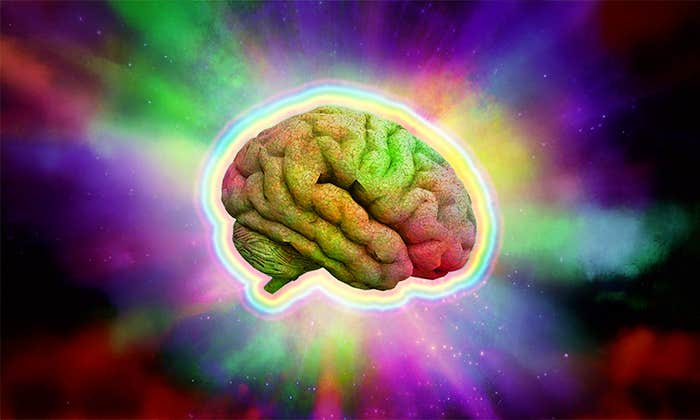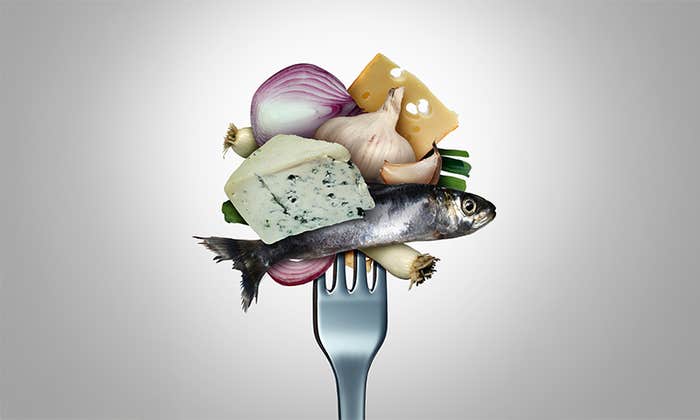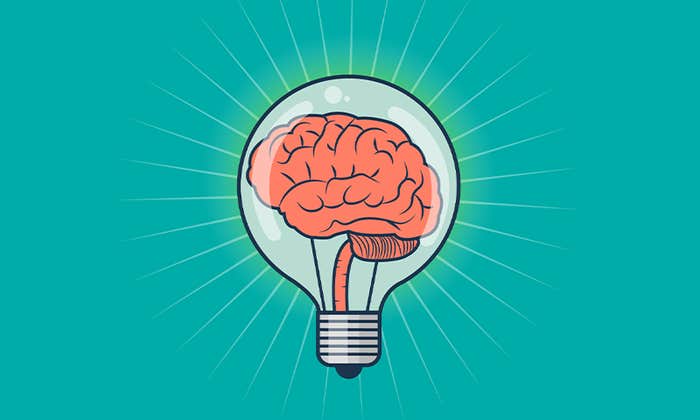You won’t have seen it on the podium, but the human brain’s mirror neuron system could have medaled at this year’s Olympic Games, or basically any sporting event with an audience. The mirror neuron system is a network of neurons that activates both when you watch someone do something and when you do it yourself, and it turns out to be an important part of the subjective experience of being a fan.
But watching a sport doesn’t just flip your mirror neuron system on like a switch. There are degrees of activation. While you and the person sitting beside you probably both have your mirror neuron systems firing, your neighbor’s neurons might have different levels of activation than yours. So who gets the biggest mirror buzz, and why?

The story of mirror neurons starts in 1990s Italy with a macaque monkey and a peanut. Researchers at the University of Parma wanted to determine which neurons in the monkey’s premotor cortex fired during reaching and grabbing movements, so they implanted electrodes in its brain. As a popular version of the tale has it, a researcher was eating peanuts in the lab sometime later when a recording device signaled that the monkey’s corresponding neurons had just fired, even though the researcher, and not the monkey, was doing the peanut-eating. The lab released a groundbreaking report on their observations in 19921 and then in a 1996 paper2 that coined the term “mirror neurons”—neurons that fire both in response to the observation and execution of an action. The mirror neurons were located in the inferior premotor cortex of the monkey’s brain, in an area involved with goal-directed hand motions. The authors made a bold suggestion: Mirror neurons might enable the animals to understand the purpose of a movement by internalizing it.
At first, the discovery was dismissed. In a short video on his work, one of the University of Parma scientists, Giacomo Rizzolatti, chuckles as he relates how Nature rejected an early paper because it wouldn’t interest a broad audience. But mirror neurons quickly gathered steam, and soon, researchers were working to find their human equivalent.
The average spectator obviously won’t have the same expertise as an athlete—but if they did, it would change the experience of their fandom.
Definitively locating individual mirror neurons in humans turned out to be no small task, however. That’s because the electrode-implantation technique used on macaque monkeys was too invasive a procedure to perform on humans. Twenty-five years after the discovery of mirror neurons, two studies3,4 have monitored individual neurons in humans to see if their behavior compared to that of macaque mirror neurons. Both used electrodes already implanted into the brains of epileptic patients for medical reasons. The studies found a set of neurons that fired only when the patients grabbed objects, another set that fired only when they watched others perform the action, and a third set that responded in both situations—a behavior resembling that of mirror neurons.
Most studies of the mirror neuron system in humans have relied on methods that are less granular than implanted electrodes. These include functional magnetic resonance imaging, which tracks blood flow to larger regions of the brain. Studies using fMRI have implicated additional brain areas, including those involved in sensation, in mirror neuron system activation, representing a significant broadening of the original definition, which confined itself to the premotor cortex. Some scientists have pushed back against this broadening, arguing that motor simulation doesn’t necessarily rely on a specialized class of neurons.5
That disagreement is just one debate among many surrounding these contentious cells. Some scientists have posited that malfunctions in mirror neurons are implicated in autism,6 for example, while others have roundly criticized this “broken-mirror” hypothesis.7 But the basic premise of the mirror neuron system—that performed and observed actions share at least part of a neuronal fingerprint—has been demonstrated repeatedly. Which brings us to the arena and its athletes, coaches, and flag-waving fans.
As spectators in Gangneung Ice Arena watched American figure skater Nathan Chen land a quad earlier this year, their mirror neuron systems responded as if they had executed the same tricky jump themselves. But when we compare engagement levels between different observers in the arena or fans cheering on their teams from home, the story gets more complicated.
The average spectator obviously won’t have the same expertise as an athlete—but if they did, it would change the experience of their fandom. Research on ballet and capoeira dancers suggests that experience affects how the mirror neuron system is activated.8 The classic mirror system areas in dancers’ brains were demonstrably more active when they watched a clip of their own style of dance than when they watched a similar sequence in an unfamiliar style. The Olympians Tessa Virtue or Scott Moir, who won a gold medal for Canada in this year’s ice dancing event, would experience a lower mirror neuron response watching figure skating than ice dancing. A fan who plays hockey at the local rink but has never figure skated would likely have an even lower response—regardless of whether she knows all the rules of the game.
A fan sitting in the nosebleeds is probably getting less of a mirror response than someone who is courtside.
Another study from 20089 showed video clips of free throws to three groups of people: professional basketball players, “expert watchers” like commentators and coaches, and average Joes. Each group was asked to predict whether individual free throws would make it into the basket. The expert watchers experienced more muscle excitability while watching the clip than the novices, suggesting their brains were better mirroring the movement they were seeing, and priming their muscles for action. Professional players were, in turn, quicker to correctly predict the free throws’ success than the expert watchers.
Even for truly fanatical sports enthusiasts who might consider themselves “expert watchers,” observation just isn’t a cognitive substitute for firsthand experience. Another study showed that observational knowledge of piano playing didn’t translate to having the same hand-muscle priming that trained pianists exhibited when they watched a piano error unfold. While the mirror neuron systems of sports writers, proud moms, and avid fans at the Olympics will likely be more engaged than someone who accidentally switched the channel to NBC, their neural response won’t match that of an Olympian.
Another variable that impacts the strength of mirror neuron response is how you’re watching the action, whether that’s streaming a sporting event on your phone or sitting in front-row seats. “Live actions are better than filmed actions, all things being equal, in driving motor responses,” Marco Iacoboni, a neuroscientist at the University of California, Los Angeles, explains. A fan sitting in the nosebleeds is probably getting less of a mirror response than someone who is ringside or courtside.
The nosebleeds might also deliver an inferior sound experience, which matters too. Rich auditory cues, Iacoboni explains, enhance the mirroring in your head. Scientists have found auditory mirror neurons in monkeys—a subset of mirror neurons (about 15 percent of the total) that fired when they simultaneously observed and listened to an action, as well as when they simply heard (but didn’t see) that action.10 A 2009 study of blind participants suggested that the human mirror neuron system has a similar auditory function.11
So if you want to be the ultimate mentally engaged fan, it’s worth paying for good tickets—but it may be even more worth it to try playing the game yourself.
Lila Thulin is a journalist who holds a degree in human biology from Stanford University.
References
1. di Pelligrino, G., Fadiga, L., Fogassi, L., Gallese, V., & Rizzolatti, G. Understanding motor events: a neurophysiological study. Experimental Brain Research 91, 176-180 (1992).
2. Rizzolatti, G., Fadiga, L., Gallese, V., & Fogassi, L. Premotor cortex and the recognition of motor actions. Cognitive Brain Research 3, 131-141 (1996).
3. Mukamel, R., Ekstrom, A.D., Kaplan, J., Iacoboni, M., & Fried, I. Single-neuron responses in humans during execution and observation of actions. Current Biology 20, 750-756 (2010).
4. Perry, A., et al. Mirroring in the human brain: Deciphering the spatio-temporal patterns of the human mirror neuron system. Cerebral Cortex 28, 1039-1048 (2018).
5. Filimon, F., Reith, C.A., Sereno, M.I., & Cottrell, G.W. Observed, executed, and imaginged action representations can be decoded from ventral and dorsal areas. Cerebral Cortex 25, 3144-3158 (2014).
6. Oberman, L.M. & Ramachandron, V.S. Broken mirrors: A theory of autism. Scientific American scientificamerican.com (2007).
7. Southgate, V. & Hamilton, A.F. Unbroken mirrors: Challenging a theory of autism. Trends in Cognitive Sciences 12, 225-229 (2008).
8. Calvo-Merino, B., Glaser, D.E., Grèzes, J., Passingham, R.E., & Haggard, P. Action observations and acquired motor skills: An fMRI study with expert dancers. Cerebral Cortex 15, 1243-1249 (2005).
9. Aglioti, S.M., Cesari, P., Romani, M., & Urgesi, C. Action anticipation and motor resonance in elite basketball players. Nature Neuroscience 11, 1109-1116 (2008).
10. Keysers, C., et al. Audiovisual mirror neurons and action recognition. Experimental Brain Research 153, 628-636 (2003).
11. Ricciardi, E., et al. Do we really need vision? How blind people “see” the actions of others. Journal of Neuroscience 29, 9719-9724 (2009).
Lead Photo Collage Credits: ilbusca / Getty Images


























